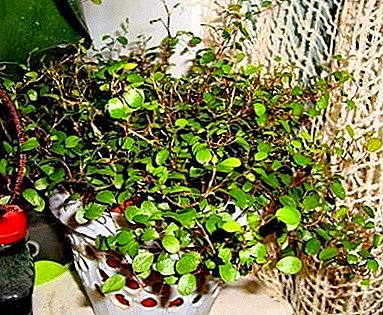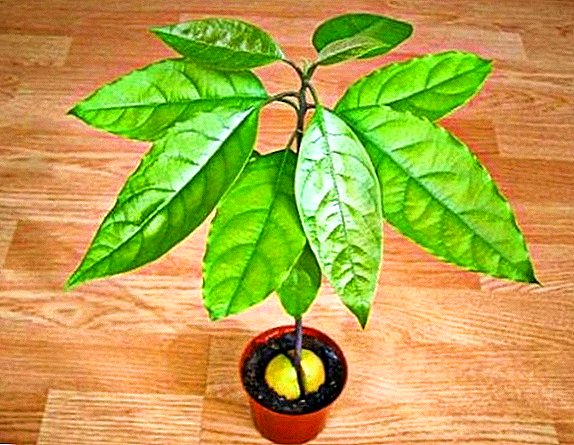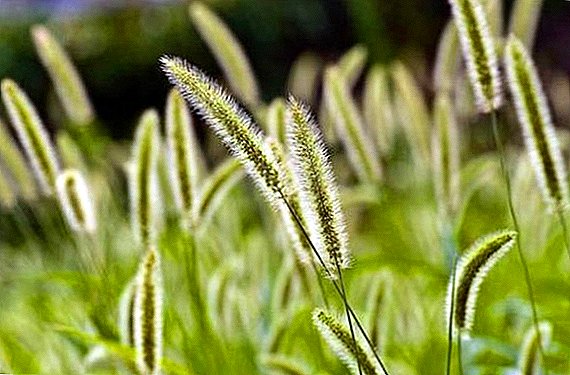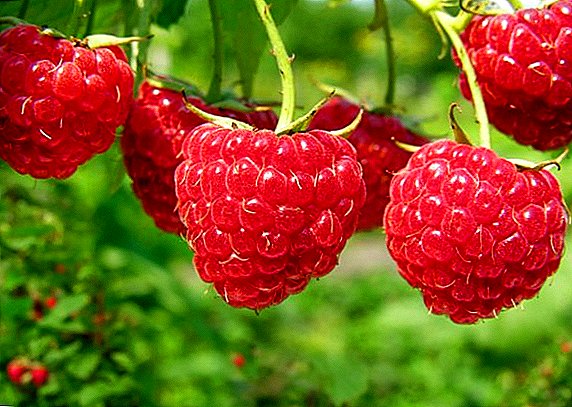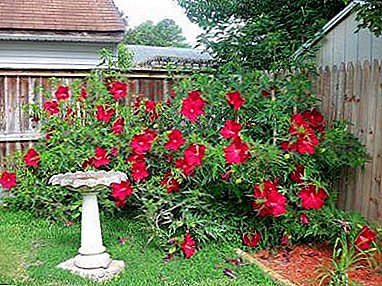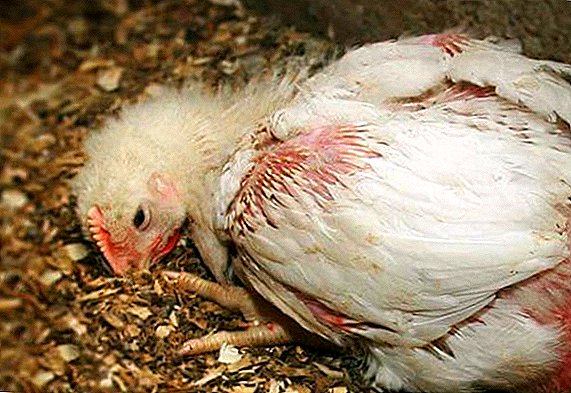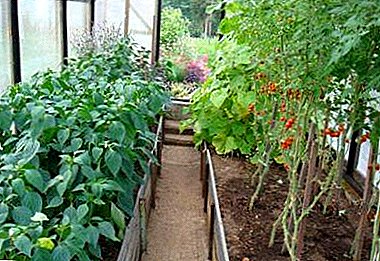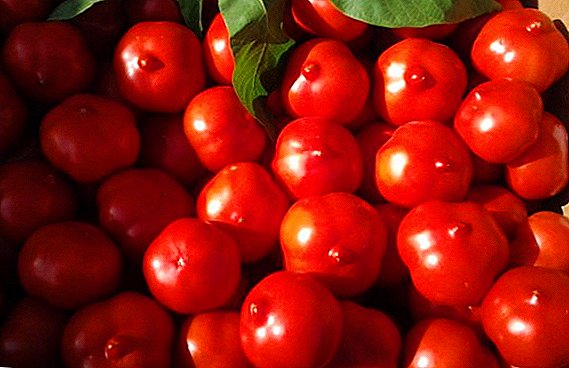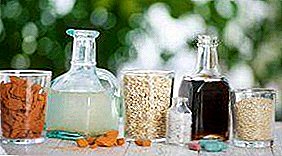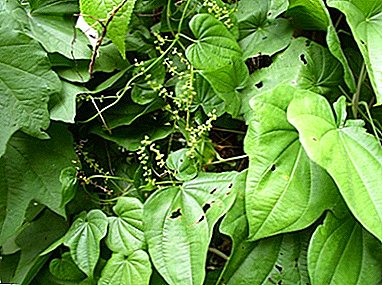
Recently, people more and more often began to grow vines in their gardens, on summer cottages. They look great in the landscape.
But many of them, in addition to this, have useful medicinal properties. Caucasian Dioscorea - just such a liana.
Thanks to the valuable healing properties of the root of the plant, it has been called the "root of youth" by the people.
In some countries and various medical sources, it is found as wild yam. This type of Dioscorea is found in the Caucasus.
What it is: botanical description and photo
The leaves of the plant are petioled, heart-ovate, slightly pointed with a slightly notched edge, on which there are 9–13 arcuate veins. The lower surface of the leaf blade is slightly pubescent. In the lower part of the shoot, the arrangement of the leaves is whorled, in the top - the next.
Dioscorea blooms in May and June. Its small (3-4 mm) flowers are unisexual and dioecious. Perianth greenish color. Fruit - box, more than a flower - 2-3 cm, with three membranous wings. Fruits appear in July-September.
The photo shows what this vine looks like.




Distribution and habitat
Caucasian Dioscorea is a relict plant, therefore it is rarely found. Grows mainly in the western regions of the Caucasus. It prefers the lower forest belt with a height of 400-1000 m above sea level (Abkhazia, Adlersky district, Krasnodar region).
It is found in dry oak and oak-hornbeam forests, thickets of bushes, at the outcrops of rocks. It prefers the slopes of southern exposures and thin carbonate soils. The total area of distribution of the plant is 15,000 hectares; however, a much smaller part has a commercial value.
Dioscorea is listed in the Red Book of Russia. For a long time, it did not succumb to cultivation, but at the end of the 20th century, scientists were able to select suitable conditions. Now the plant is grown near Moscow and the Far East.
Medicinal properties and contraindications of the plant root
The rhizome of the Caucasian Dioscorea contains saponins, they are also steroid glycosides.. These substances have a very wide range of biological activity. With the help of them, hormonal preparations are synthesized, for example, phytoestrogen diosgenin is actively used in Russia, on the basis of which they make medicines, dietary supplements, anti-aging cosmetics, and female contraceptives.
Categorically you can not take drugs and tinctures containing the dioscorea to people who have experienced a stroke, as well as suffering from bradycardia, low blood pressure, gastritis, gastric ulcer and individual intolerance to individual components of the plant. Dioscorea is also not recommended for pregnant and lactating women.
Medical applications
Consider what diseases this plant treats.

- For organs of sight. Cataracts, lysoropia and farsightedness in the early stages can be treated with a collection of dioscorea, tsmina herbs, clover, hawthorn and sage. To do this, you must complete a course of three weeks.
- For the gastrointestinal tract. Using the root of the plant improves gastrointestinal motility, and can also treat gastritis, but only in the early stages. To do this, use a decoction of chopped root Dioscorea, lemon balm, chamomile, fennel, ginger and mint. Drink should be immediately before bedtime.
- For the nervous system. People with problems with the nervous system recommends treatment with decoction based on Dioscorea. The course is one month, and after it passes, blood pressure returns to normal, headaches stop, tinnitus disappears, sleep normalizes.
- For the cardiovascular system. The plant has the ability to clean the walls of blood vessels from cholesterol, which is why it is often recommended to be used by older people. Funds that include Dioscorea root can relieve the symptoms of atherosclerosis, improve the post-infarction condition, and alleviate the effects of stroke, high blood pressure and rheumatoid arthritis.
Dioscorea also increases blood supply and dilates blood vessels, helping to prevent the occurrence of tachycardia and angina. People who have problems with the cardiovascular system, it is recommended to use alcohol tinctures on the dry root of the plant.
- For respiratory organs. The plant is used for the treatment of bronchitis and pneumonia. Also, regular intake of products with Dioscorea in the composition improves the well-being of patients with bronchial asthma.
Collection and storage
Harvest the plant either in spring or late autumn, during fruiting.
- You need to dig a plant and cut off the ground parts.
- Next, the roots are cleaned: it is necessary to remove the ground and rotten areas from them.
- Then the rhizomes are cut into thin (2-4 mm in thickness) pieces of 5-7 cm in length.
- Dioscorea root should be dried in a dark place, or in dryers.
Preparation of means and their use
What helps teas and decoctions, tinctures, ointments and powders based on Dioscorea?

- Tea. Tea from the root of the plant normalizes the level of cholesterol in the human body, improves memory and sleep, enhances the blood circulation of the respiratory organs and enhances immunity. To brew tea, you need to mix green tea and roots in a ratio of 2: 1. Consume should be an hour after breakfast. You can drink on a regular basis.
- Infusion. The use of tincture with Dioscorea helps with problems with the cardiovascular system. For tincture you need to take 100 g of the plant root per liter of vodka. The roots are kept in vodka for a week and a half, then the tincture is filtered. Drink 3 times a day, 25 drops, diluted with warm water.
- Decoction. A decoction improves the digestive and nervous system. Roots pour hot water and steam for about half an hour. After that, the liquid must be cooled and filtered. Take 3 times a day a tablespoon after a meal for a month. The course should be conducted every 4 months.
- Powder. Accepted with atherosclerosis. To obtain the powder, the root of the Dioscorea is ground. You need to take a day a third of a teaspoon, a bit of sugar and honey. Every 10 days you need to take a break for a week. The course lasts no longer than 4 months.
- Ointment. It is used to treat atherosclerosis of the legs. Per 100 g of chopped root take 400 g of pork fat. It is necessary to mix them and boil the resulting mixture for 2 hours in a water bath, stirring.
Half an hour the mixture is infused, then placed in the refrigerator. Ointment is used before bedtime, but after it you must always wrap your legs with a towel or hold over the steam.
Side effects
Among the side effects caused by this plant may be:
- loss of appetite;
- bowel disorder;
- excessive sweating;
- pruritus
Growing at home
- Purchase of planting material. Dioscorea can be ordered online and receive planting material by mail or pick it up yourself, depending on where the store in which the material is ordered is located. The average price for one sapling in Moscow is 150 rubles.
- Inventory preparation. For planting Dioscorea does not require special equipment, the usual garden will do.
- Preparing a landing site. The plant is not demanding on the composition of the soil, but it is better to plant it on loose, fertile soils with a neutral level of acidity. Clay soils will limit the growth of tubers and make harvesting difficult.
The plot should be cleared of weeds. The lighting of the area where the Dioscorea grows should be light and diffuse. The recommended summer temperature is + 20 ° C, in winter - not lower than + 13 ° C.
Dioscorea tolerates dry conditions, but high humidity promotes better growth. - Preparation of planting material. Growing this plant from seed is very difficult. It grows very slowly, and for growth it will be necessary to constantly maintain a temperature of 25-30 ° C. Easier to propagate the pieces of rhizomes, the size of 6-7 cm.
- Landing. Root is planted in spring or autumn to a depth of 10-12 cm at a distance of 20-30 cm from each other.
- Care. In summer, the plant must be abundantly watered. In the fall, watering is reduced, and by winter watering becomes quite rare. Periodically, you can weed and loosen the soil on which the Dioscorea is grown.
- Wintering. Adult specimen will be enough mulch pristvolnogo circle for the winter, but young plants should be excavated, placed in a container with sand and stored in a cool room, and landed in the spring.
- Diseases. Caucasian Dioscorea is resistant to diseases.
- Pests. The main plant pest is the red spider mite. Understand that a copy is affected by this pest can be on coiled and withered leaves. If a lesion is found, it is worth washing the leaves with soapy water or spraying tincture of onion peel.
Caucasian Dioscorea is a wonderful climbing vine that can not only beautify the garden and bring revival to any landscape. She has a huge amount of medicinal properties, as well as unpretentious in growing, therefore, is an excellent choice for any gardener.


